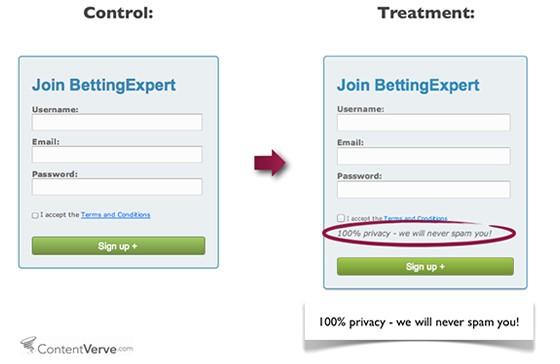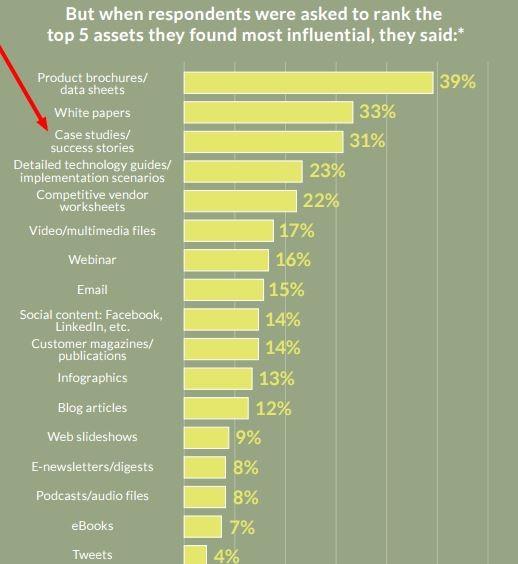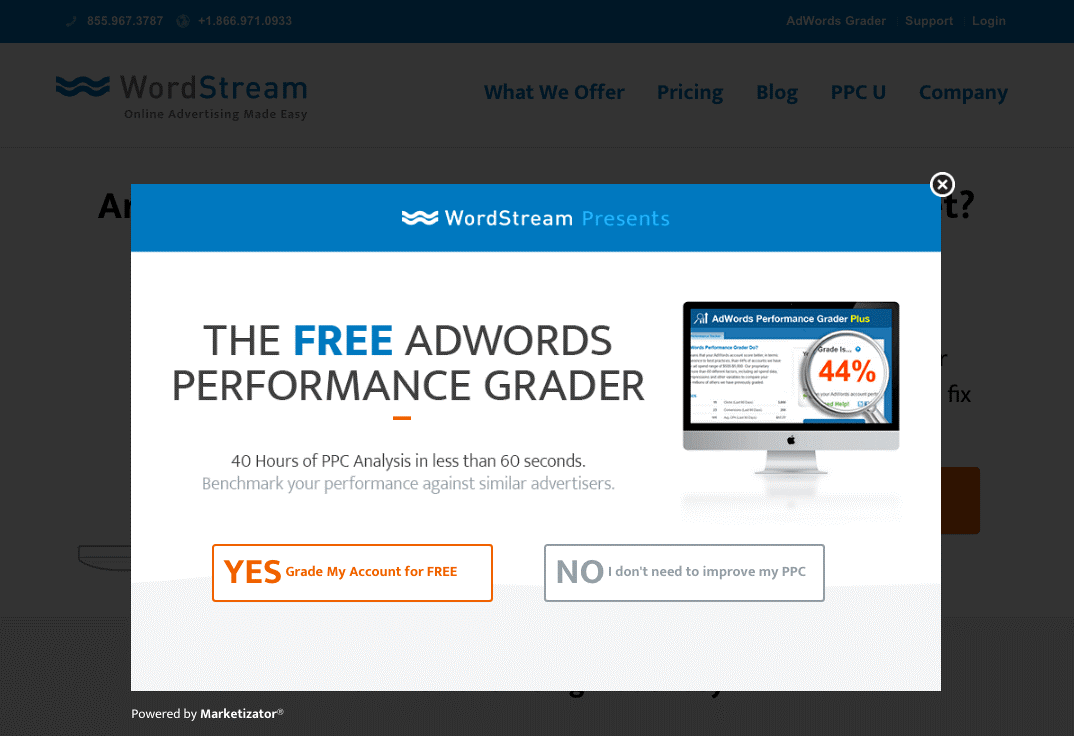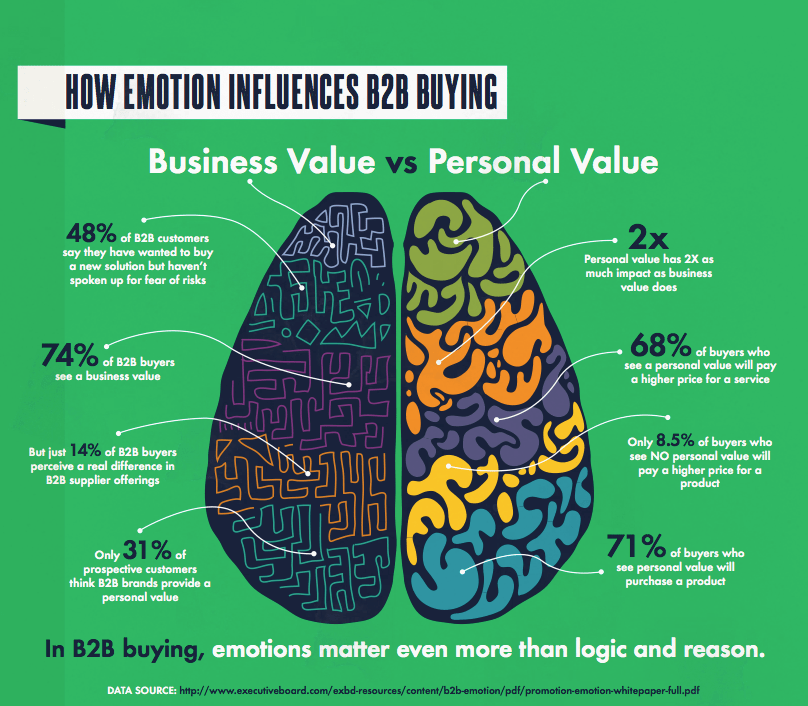What tactics, strategies, and techniques can you use to generate more leads for your business?
One study from Citizen Relations Canada found 68% of Canadian millennials have bought because of a “fear of missing out” (FOMO) marketing approach. And 45% couldn’t go longer than 12 hours without checking their favorite social media platforms.
(Whoops. Gave you an extra tip. Sorry. I let that stuff slip sometimes…)
Anyway, FOMO is powerful indeed. So are urgency, scarcity, exclusivity, surprise, and social proof.
While these tactics work, many other online lead generation approaches work too. Except they’ve been forgotten or just aren’t as well known.
Check out these seven lesser known lead generation marketing ideas, and consider how you can adopt each of these ideas to boost the number and quality of leads you get from your marketing.
Here’s a quick preview of our 7 underrated lead generation ideas:
- Never use the word “spam”
- Case studies are your secret weapon
- Use power words in your button copy
- Use market research to inform marketing copy
- Use a no-fail testimonial formula
- Create an irresistible lead-gen offer
- Leverage emotional marketing (even for B2B lead gen!)
Sound good? Let me explain each of these lead generation techniques in detail:
1. Never Warn Your Visitors You’ll Protect Them From “Spam”
Wait a minute…what? Offering to protect your visitors from spam reduces your leads?
It does. But not for the reason you think.
Say you’re an insanely ethical marketer. Your audience always comes first. You’ll never dupe them into anything, even if you could make a clean getaway (and sweet profit).
So, in your opt-in form, you say, ”We’ll never spam you!” You do it just like Content Verve did:
You feel good about yourself. You were the knight in shining armor for your visitors. So you should get more leads, right?
Not. So. Much.
Michael Aagard ran the test you see in the image above. He found an 18% reduction in conversions when using, a ”100% privacy – we will never spam you!”disclaimer on his sign-up form.
Why?
The word “spam” just reminds prospects of receiving spam. Even though the context was to reassure prospects they wouldn’t get spammed, saying the word scared 18% of them off.
How to increase your leads: Reassure your prospects you’ll protect their privacy. Just don’t use the word “spam” when you do it. And check out these other conversion-sabotaging words you should avoid at all costs.
2. Try This “Secret Weapon” Content Type that Doesn’t Get the Attention It Should
Know what case studies are? Of course you do. But do you realize their true potency?
Check this out:
- B2B Marketing’s Content Marketing Benchmark Report surveyed 112 B2B marketers. 66% rated case studies “very effective.” 32% called them “quite effective.” That made case studies the most effective content type in that report.
- 55% of the 600 B2B marketers surveyed in the 2016 B2B Content Marketing Report ranked case studies the number one most effective content type. “Best practices” (53%) came in a close second while “how-to” content ranked third (47%).
- 31% of respondents to Eccolo Media’s 2015 B2B Technology Content Survey Report ranked case studies the third most influential content type. They came in a close second to white papers (33%) and data sheets (39%).
So the evidence conflicts…but only a little. The general point remains clear: case studies persuade.
But you have to create case studies the right way. So many business websites have 100-200 word mini case studies that follow the predictable (and boring) Challenge/Solution/Results formula.
That’s not necessarily bad. But case studies that actually get read generally follow a more creative path. Zapier has an excellent post, with quotes from multiple expert case study writers, that shows you how to tell a fascinating story that causes buying action.
How to increase your leads: Write your case studies the right way. Include them in your funnels wherever possible to push prospects in the consideration phase to take the next step. Bonus hint: Call your case studies “Success Stories” to boost interest, clicks, and leads!
3. Sexy Up Your Button Copy Already
You probably have some awareness that your button’s copy affects action. But do you know the proven formulas?
They’ll help you write your button’s copy faster. You’ll have better success with your landing pages. And you won’t waste so much time A/B testing.
I’ll share master copywriter Joanna Wiebe’s favorite button formulas:
- Simply start with the phrase “I want ____” or “I want to ____” and fill in the blank. What you put in the blank goes on your button as its copy. Don’t actually put “I want.” Let that guide your thinking, though.
- Start with “Get.” Who doesn’t want to “get” something?
- RAD: “Require,” “Acquire,” and “Desire.” It works like this:
- Give your visitor all the information they require before clicking your button
- Make your button easy to acquire (aka “click”)
- Ensure your visitor desires what your button copy promises
- Hook, Line, and Sinker. It goes like this: “command verb + offer + urgency.” So, you might say “Save 25% now!”
By the way, save this link with all her proven copywriting formulas for every situation – headlines, long-form sales pages, value propositions, bulleted lists, and many more. Protect them like you do your own life. No exaggeration! Follow these formulas. Implement them everywhere on your website. No need to start from scratch.
4. Figure Out What Messaging Your Market Responds To
Do you know the exact words and phrases that connect with your market? You should. Because if you do, you’ll get a lot more leads.
But doesn’t that take complex and expensive marketing research? Not anymore.
You can at least get a decent idea when you study your market online. It’s not hard to do. Even so, market research gets overlooked by many online business owners.
Check out one B2B and one B2C example to get a feel:
A B2B Lead Gen Example
If you’re in a B2B industry, you should rejoice with the new software review websites, like G2 Crowd. They’re a goldmine of free market research.
The first three reviews for Pipedrive, a CRM, routinely mention “easy” and “ease” in reference to its use. “Custom,” “customizable,” and “complete” appear often too. Users who don’t like Pipedrive think it doesn’t do enough to differentiate from other CRMs, and that it’s buggy sometimes.
Bingo. If you need to market your CRM, that’s what users like and don’t like. On your own, you’ll of course look at more reviews. And you should cross-reference them with other B2B software review sites.
A B2C Lead Gen Example
While B2B can somewhat limit your research, B2C has no shortage. Amazon has reviews galore. Many smaller niche websites have customer reviews.
Again, you just look for patterns. A quick analysis of a NatureMade Super B Vitamin Complex at Amazon reveals that consumers:
- Love the day-long energy burst they get from just one softgel
- Enjoy that they don’t have to drink multiple energy drinks daily
- Find it awesome that the softgels don’t leave a bad taste
Yeah. Researching your market really is that easy. And of course, you should stalk Pinterest, Facebook, LinkedIn, Twitter, or other social networks to learn your market too.
Billion-dollar corporations often don’t realize they can do this. So it’s a huge competitive advantage for you.
How to increase your leads: Pull the most frequently mentioned words, phrases, and concepts your market uses and splice them in your copy for ads and landing pages. You’ll build stronger connections. And that generates more qualified leads.
5. Get Testimonials That Actually Convince
Every company gets testimonials. Hedge-fund-manager-turned-blogger James Altucher relates a hilarious story about reputation in business.
He needed to raise money for one of his hedge funds. He visited his neighbor’s boss. Unfortunately, the boss wasn’t willing to help him out. He let James down easy, saying:
“I’m sorry, James. We like you and if you want to work here, then that would be great. But we have no idea what you would be doing with the money. And here at Bernard Madoff Securities, reputation is everything.”
So someone will vouch for everyone. And that’s why you need persuasive testimonials.
Not just ones that say, ”You rock.” Every company gets a handful of those.
Derek Halpern offers his “Perfect Testimonials Framework” below:
…And here’s the gist if you don’t want to watch the video:
- The perfect testimonial highlights a problem your ideal customer currently has
- It should detail how your product or service solves your ideal customer’s problem
- You truthfully highlight the results
- You need a “perfect testimonial” from each ideal customer type you want to serve
But how do you get these? Can you even name a single time where you got a testimonial like this?
It’s easier than you think. Simply reach out to your happiest customers and ask to have a brief interview. If you already know the story, ask your customer if you can write the testimonial and have them approve it (but don’t go over the top).
How to increase your leads: You saw it. Don’t use just any old testimonial. Get the “Perfect Testimonial.” You’ll ease fear, increase connection, and win more leads.
6. Give Your Prospects the Offer They Want
This may be the most difficult tip yet. You could easily consume dozens of blog posts on offers. Matching your offer to your prospect’s desires takes research and testing, but nothing can raise your conversion rates like finding the exact right offer.
For now, consider this high-level overview for creating an effective offer:
- For free B2B lead gen offers, make the content so valuable your prospects would pay for it. See this past one from WordStream:
- In B2C, focus on emotion that includes user-generated content like testimonials and price.
- Solve a problem/hit a pain point.
- Match the content type to the right stage of the buyer’s journey. Hubspot has a sensational post on this: How to Map Lead Nurturing Content to Each Stage in the Sales Cycle.
- Only write on topics you clearly have expertise in.
- Test like crazy.
How to increase your leads: Understand your market’s pain points. Solve them with a genuinely helpful offer. Test until you find the best fit.
7. Use Emotion In Your B2B (Yes, B2B) Lead Generation
You read that right. Your B2B lead generation strategies must include emotion. Beginners and intermediates in lead generation marketing often mistakenly believe B2B prospects only use logic.
Buyers will tell you they’re logical. But their behavior, and research, proves otherwise.
See this research by CEB summarized beautifully by Kapost:
Master B2B copywriter Bob Bly, with more than 30 years of experience and an unquestionable reputation, gives this advice about B2B buyers:
“Incorporate an emotional hook in the headline and lead paragraph. Logical selling can work, but tapping into the prospect’s emotions is much stronger – especially when you correctly assess how the prospect is feeling about your product or the problem it solves right now.”
His Business-to-Business Marketing Handbook, by the way, is an awesome (and free) B2B marketing resource.
So, buyers really begin with an emotional connection. But, they do use logic extensively to back it up.
Recent combined research by Google, Motista, and CEB’s Marketing Leadership Council also found, ”Not only did the B2B brands drive more emotional connections than B2C brands, but they weren’t even close.”
To get the results, all three surveyed 3,000 purchasers of 36 B2B brands in multiple industries. They employed the same methodology Motista used to gather B2C research.
Why’s this true? B2B buyers have so much more at stake. Not only do they have to make a decision, but they have to get it through 7-20 people. The purchase could cost seven figures. And if doesn’t work out, the decision maker could get fired.
Compare that to consumers. They simply throw stuff away or ask for a refund.
How to increase your leads: B2B buyers need emotion too. Lead with it. Write emotional ads. But balance emotion with logic. And don’t cross the line into hype.
Now You’re Ready to Unlock Streams of Hidden Leads
Armed with these research-driven online lead generation ideas, you can now turn more casual visitors and prospects into qualified leads.
Instead of struggling for revenue, you’ll feel challenged to keep up with demand.
And since so many people forget to use these tactics, you can swipe the leads for yourself without worrying about your competition.
About the author
As a freelance copywriter, Dan Stelter crafts persuasive lead-generating content for B2B software, SaaS, and service companies, earning him the moniker “The B2B Lead Gen Guy.” When you don’t find Dan helping B2Bs swipe more market share from competitors, you will find him reliving the good ol’ days of The Simpsons.












0 Comments